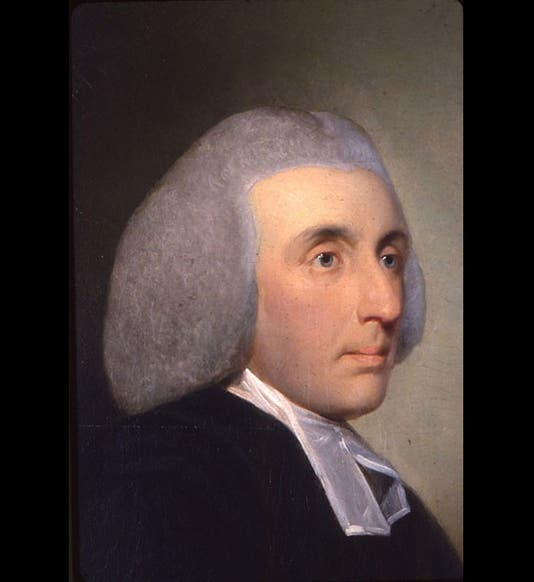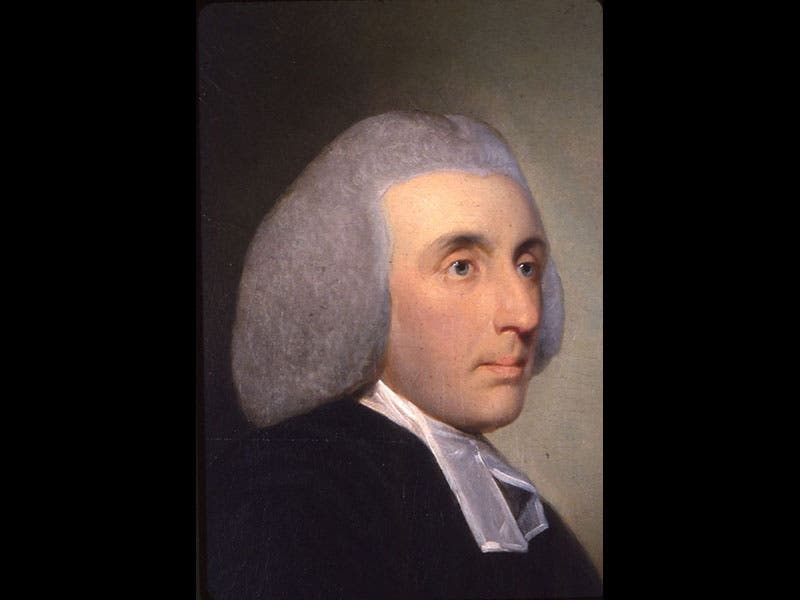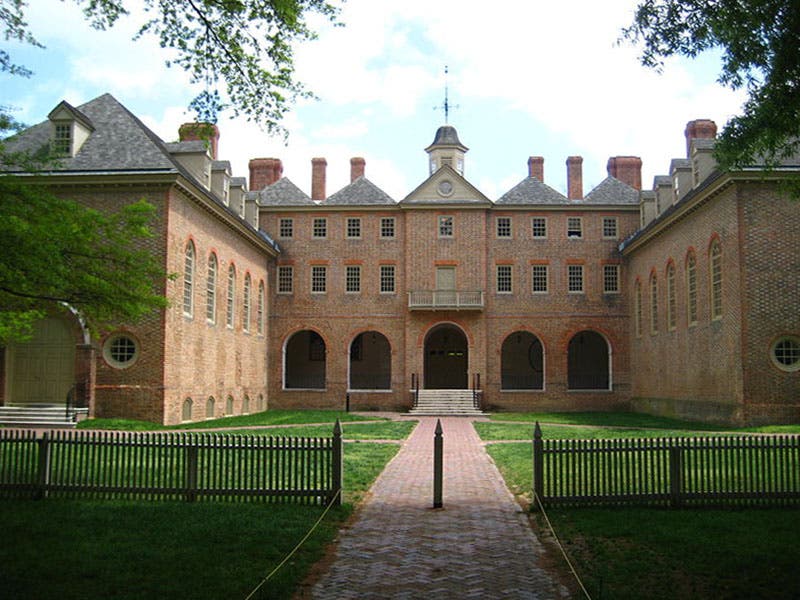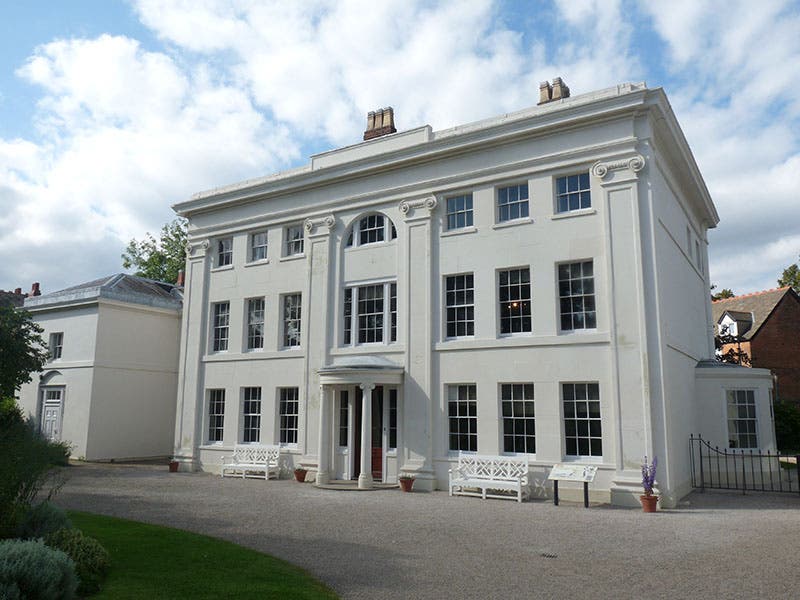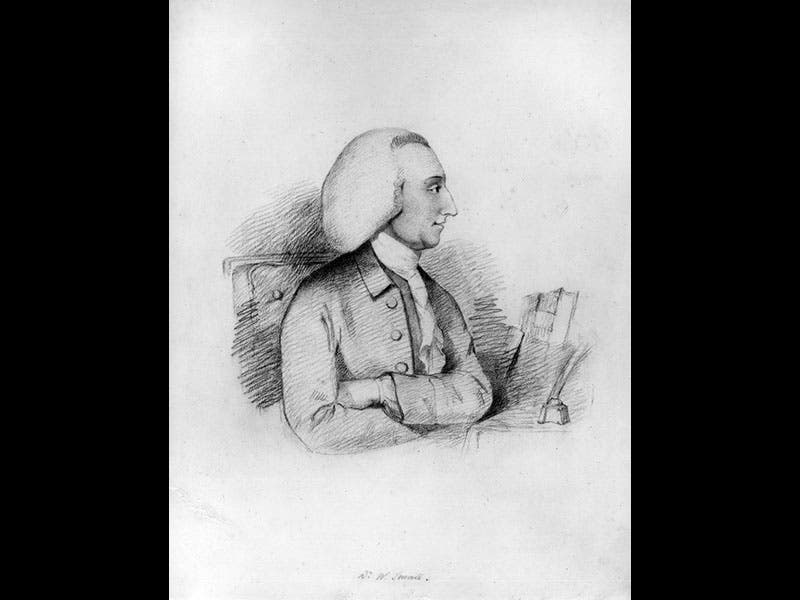Scientist of the Day - William Small
William Small, a Scottish physician, was born Oct. 13, 1734. In 1758, fresh out of college in Aberdeen, Small accepted an appointment as Professor of Natural Philosophy at the College of William and Mary in Williamsburg, Virginia. In 1760, young Thomas Jefferson, 16-years old, walked into his classroom. It was a life-changing experience for one of them. Small introduced Jefferson to the writings and ideas of Isaac Newton, Francis Bacon, John Locke, and the rest of the world of Continental natural philosophy. Fifty years later, Jefferson recalled:
It was my great good fortune, and what probably fixed the destinies of my life, that Dr. Wm. Small of Scotland was then professor of Mathematics, a man profound in most of the useful branches of science, with a happy talent of communication, correct and gentlemanly manners, & an enlarged & liberal mind. He, most happily for me, became soon attached to me & made me his daily companion when not engaged in the school; and from his conversation I got my first views of the expansion of science & of the system of things in which we are placed.
Small subsequently got Jefferson a position as a law clerk and introduced him to the state governor, and Jefferson's career in both science and politics was off and running. The Wren Building at William and Mary where Small lectured and Jefferson blossomed still stands (second image).
Small returned to Great Britain in 1764, received his MD at Aberdeen, and moved to Birmingham to practice. He had a letter of introduction from Benjamin Franklin, and thus he met Matthew Boulton, the manufacturer, and his friend James Watt; the physician Erasmus Darwin, the potter Josiah Wedgwood, and a number of other like-minded intellects. Small was instrumental in organizing an informal gathering, called the "Lunar circle," which met regularly (on the night of the full moon, hence the name) at Boulton's house in Soho (third image). The year was 1766. This group eventually grew and organized itself into the Lunar Society of Birmingham, which was formally founded at the end of 1775. It became the hub of intellectual life in the English Midlands. Sadly, Small was present only for the preliminaries, as he died, probably of malaria, early in 1775, only 40 years old. The Lunar Society, instead of his principal achievement, became his legacy.
There are only two portraits of Small, both at the College of William and Mary. The oil portrait by Tilly Kettle (first image), hangs in the President’s House in Williamsburg. The charcoal sketch is somewhere in the William Small Physical Laboratories on the campus, named in honor of our subject (fourth image).
Dr. William B. Ashworth, Jr., Consultant for the History of Science, Linda Hall Library and Associate Professor, Department of History, University of Missouri-Kansas City. Comments or corrections are welcome; please direct to ashworthw@umkc.edu.

